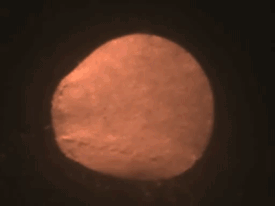Just last year, NoCamels reported on a breakthrough method to aid the heart heal itself following a heart attack, using gold nanoparticles. Now, following further testing and developments, the Tel Aviv University research team has discovered a way to heal the heart using tissue taken from patients’ own bodies, together with energy-conducting gold particles.
Because heart cells cannot multiply and cardiac muscles contain few stem cells, heart tissue is unable to repair itself after a heart attack. This means that severe damage can only be treated with heart transplants, which are costly, invasive and have long waiting lists. In order to address this “heart-wrenching” problem, Dr. Tal Dvir used sophisticated tools to develop working substitutes for damaged heart tissues.
Searching for innovative methods to restore heart function, especially cardiac “patches” that could be transplanted into the body to replace damaged heart tissue, Dr. Dvir literally struck gold. He and his team discovered that gold particles are able to improve the cardiac patch’s electrical conductivity.
SEE ALSO: A Heart Of Gold: Researchers Use Gold Particles To Heal Heart Tissue
In a study published by “Nano Letters,” Dr. Dvir’s team presented their model for a superior hybrid cardiac patch, which incorporates biomaterial harvested from patients’ own bodies and gold nanoparticles. “Our goal was twofold,” said Dr. Dvir. “To engineer tissue that would not trigger an immune response in the patient, and to fabricate a functional patch not beset by signalling or conductivity problems.”
Cardiac tissue is engineered by allowing cells, taken from the patient or other sources, to grow on a three-dimensional scaffold, similar to the collagen grid that naturally supports the cells in the heart. Over time, the cells come together to form a tissue that generates its own electrical impulses and expands and contracts spontaneously. The tissue can then be surgically implanted as a patch to replace damaged tissue and improve heart function in patients.
According to Dr. Dvir, recent efforts in the scientific world focus on the use of scaffolds from pig hearts to supply the collagen grid, called the extracellular matrix, with the goal of implanting them in human patients. However, the human patients’ immune cells are likely to attack this animal matrix, making it a less than perfect solution.
SEE ALSO: Three Cups Of Coffee A Day Protects Against Heart Disease
Sign up for our free weekly newsletter
SubscribeDr. Dvir’s group suggested a new approach. Fatty tissue from a patient’s own stomach could be easily and quickly harvested, its cells efficiently removed, and the remaining matrix preserved. This scaffold does not provoke an immune response.
Using gold to create a cardiac network
The second dilemma, to establish functional electrical signals for the patch, was also complicated by the use of the human extracellular matrix.
At his Laboratory for Tissue Engineering and Regenerative Medicine, Dr. Dvir explored the integration of gold nanoparticles into cardiac tissue to optimize electrical signaling between cells. “To address our electrical signalling problem, we deposited gold nanoparticles on the surface of our patient-harvested matrix, ‘decorating’ the biomaterial with conductors,” said Dr. Dvir. “The result was that the nonimmunogenic hybrid patch contracted nicely due to the gold nanoparticles, transferring electrical signals much faster and more efficiently than non-modified scaffolds.”
Preliminary test results of the hybrid patch in animals have been positive. “We now have to prove that these autologous hybrid cardiac patches improve heart function after heart attacks with minimal immune response,” said Dr. Dvir. “Then we plan to move it to large animals and after that, to clinical trials.”
Dr. Tal Dvir and his graduate student Michal Shevach conducted the study at TAU’s Department of Biotechnology, Department of Materials Science and Engineering, and Center for Nanoscience and Nanotechnology. Dr. Dvir has been awarded a fellowship from the American Heart Association, the Marie Curie Award for Young Investigators, the Alon Fellowship for Young Investigators from the Israeli Ministry of Education, and the Slezak Super Center Award for Cardiac Research.
Photos: Courtesy
Related posts

Israeli Medical Technologies That Could Change The World

Harnessing Our Own Bodies For Side Effect-Free Weight Loss

Missing Protein Could Unlock Treatment For Aggressive Lung Cancer






Facebook comments